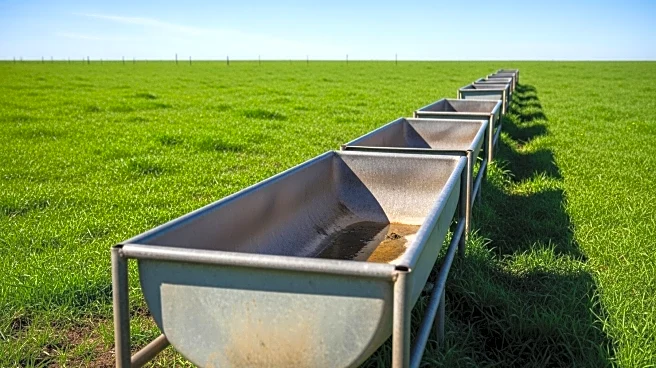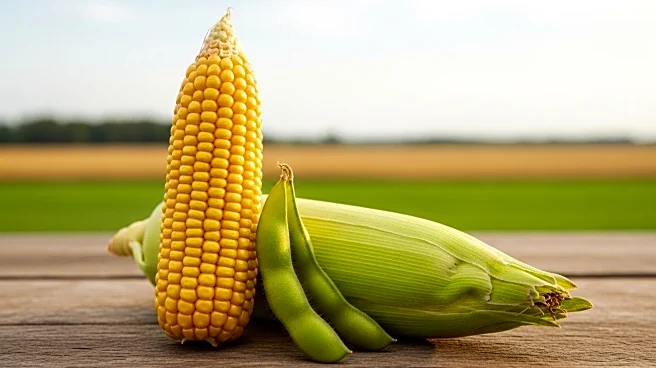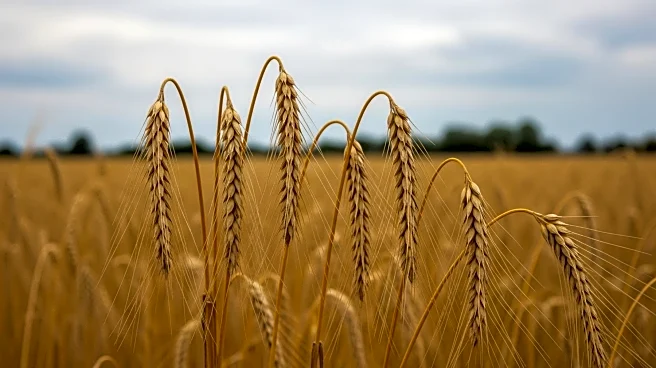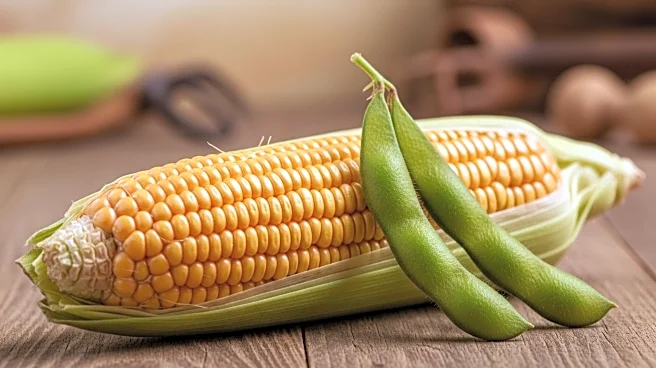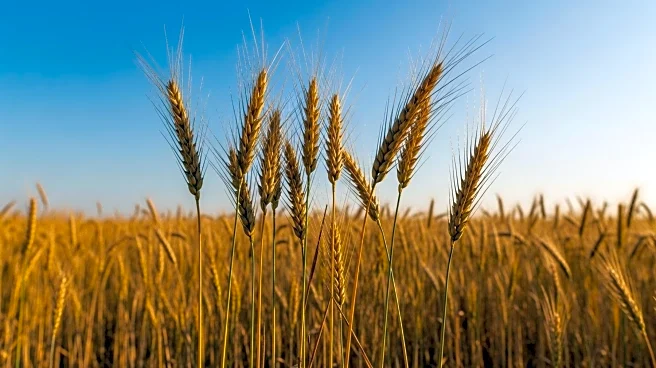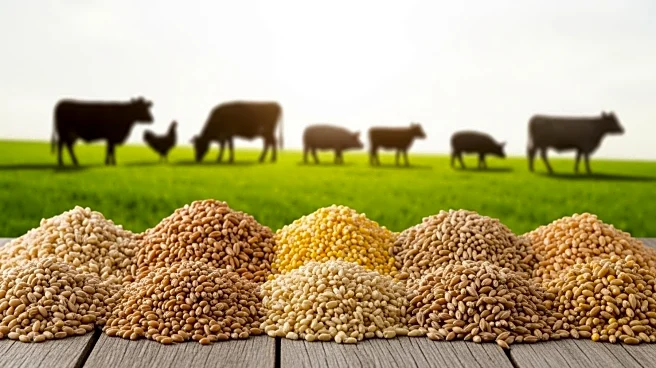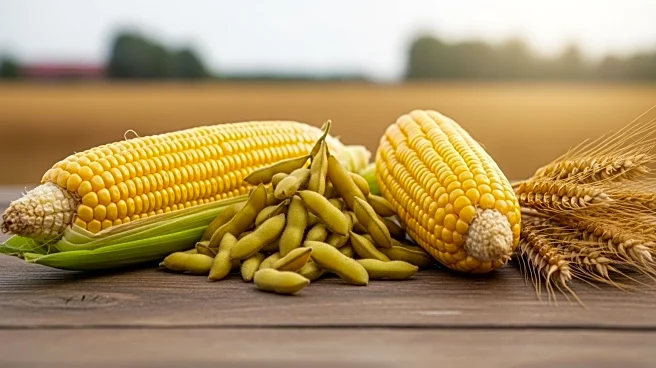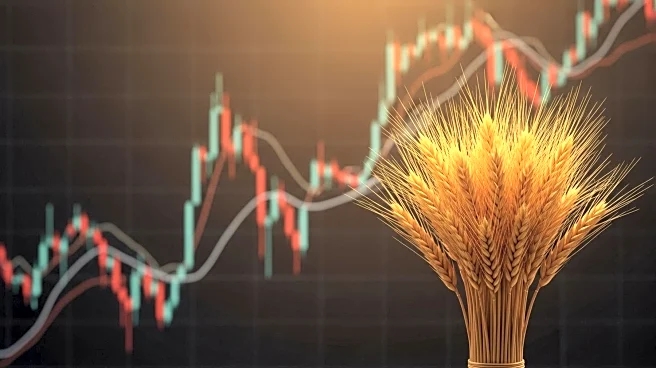What's Happening?
On September 9, 2025, feeder cattle prices experienced a significant decline, closing down more than $9 at $349.93 per hundredweight. This drop is attributed to a softening cash market, as noted by Karl Setzer, a partner at Consus Ag Consulting. The cash market, which previously led futures higher, is now driving them lower, particularly affecting the feeder market. Auction sales for feeders were steady to $4 lower, while calf sales ranged from $2 to $6 lower. The annual fall run of calves has commenced, with favorable pasture conditions due to ample soil moisture. Despite cheap feed grain, it is currently more economical to place feeders in lots rather than pastures. Meanwhile, lean hogs showed strength, closing up 98 cents at $96.13 per hundredweight, although they faced pressure from the cattle complex.
Why It's Important?
The decline in feeder cattle prices is significant for the livestock industry, impacting farmers and traders who rely on stable market conditions. The softening cash market suggests potential challenges for cattle producers, who may face reduced profitability if prices continue to fall. The favorable pasture conditions and cheap feed grain offer some relief, but the economic implications of lower cattle prices could affect rural economies and agricultural stakeholders. Additionally, the strength in lean hog prices indicates a potential shift in market dynamics, which could influence future trading strategies and decisions within the livestock sector.
What's Next?
As the annual fall run of calves progresses, market participants will closely monitor pasture conditions and feed grain prices to make informed decisions. The livestock industry may need to adapt to changing market conditions, potentially exploring alternative strategies to mitigate risks associated with price fluctuations. Stakeholders, including farmers and traders, will likely assess the impact of these developments on their operations and consider adjustments to their marketing and production plans.


